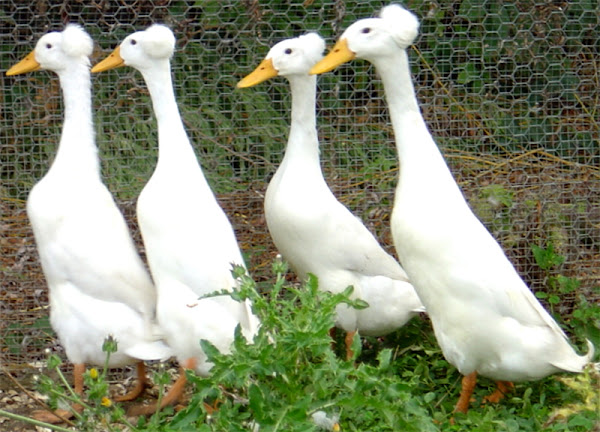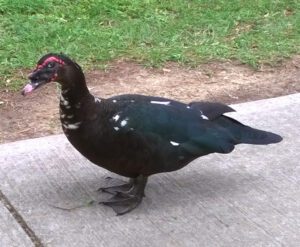The Bali duck is a beautiful, lightweight breed of domestic duck. It is also known as the Crested Runner duck or Balinese Crested duck, and one of the oldest domestic duck breeds. As the name suggests, the Bali duck originally came from the beautiful island of Bali to the east of Java, and usually uncommon outside of Bali.
Bali ducks are very amusing birds to watch with their upright carriage. They have a gene which is thought to be a lethal one, that creates the crest. Shortly that means that if two ducks with the same bloodlines are allowed to breed, the eggs will not hatch.
And if hatch, the ducklings are often born with deformities such as arched necks, back and balance problems and complications in the formation of the skull that lead to death before hatching.
On average, one of every three offspring will lack the crest. Bali ducks can be cross bred with a variety of Bali duck that does not have the crest on it’s head or even with Indian Runners for preventing this from happening.
Doing this results in a higher survival rate, but reduces the number of crested ducklings to 50 percent. However, the Bali duck is a beautiful breed of domestic duck and primarily raised for decoration or as pets.
Bali Duck Characteristics
Bali duck is a lightweight domestic breed of duck. In appearance, it is similar to the Indian Runner duck. But only differing in having a crest on the top of the head.
Bali ducks have a slender type upright body, but their body carriage is not as varied as that of the Indian Runners. Indian Runners tend to vary between carrying their body at angle of 45 to 75 degrees to the ground, while the Bali ducks can be anywhere in the range of 60 to 70 degrees.
Bali duck remains more upright than the Indian Runners that do lower it’s angle more when relaxed. Bali ducks have a coarser head and bill shape, their shoulders are wider and have heavier-set body than the Indian Runner ducks.

The Bali ducks have many varieties of standard colors. But most common color varieties are Brown, Mallard and White. Average body weight of the Bali duck is between 2.25 and 2.75 kg. Photo from A Fowl’s Home.
Uses
As a domesticated duck breed, the Bali duck is raised mainly for decoration purpose or as pets. But it is also a good egg laying duck breed. It is not a too good meat duck breed mainly for it’s smaller size.
Special Notes
The Bali duck is a very practical bird for keeping, despite it’s wonderful appearance. They are excellent foragers and require large space to roam. Like the Indian Runner ducks, the Bali ducks are also excellent pest controller for the gardens.
Bali ducks are good egg layers. On average a duck will lay about 120 to 250 large eggs per year. Their eggs are of blue-green to white in color. They are friendly in nature and usually very good as pets, and not flyers.
They are pretty rare outside it’s native place and they have not achieved the same success as the Indian Runner ducks. Review full breed profile of the Bali duck in the chart below.
| Breed Name | Bali |
| Other Name | Balinese Crested or Crested Runner |
| Breed Purpose | Eggs, Ornamental, Pets |
| Special Notes | Active, Excellent Foragers |
| Breed Class | Light |
| Broodiness | Poor |
| Duck | About 1.8 to 2.25 kg |
| Drake | About 2.25 to 2.75kg |
| Climate Tolerance | All Climates |
| Egg Color | Blue-Green to White |
| Egg Size | Large |
| Egg Weight | About 65 grams |
| Egg Productivity | Medium |
| Flying Ability | Poor |
| Rarity | Common |
| Varieties | Brown, Mallard, White varieties are common. |
| Country of Origin | Bali, East of Java |






